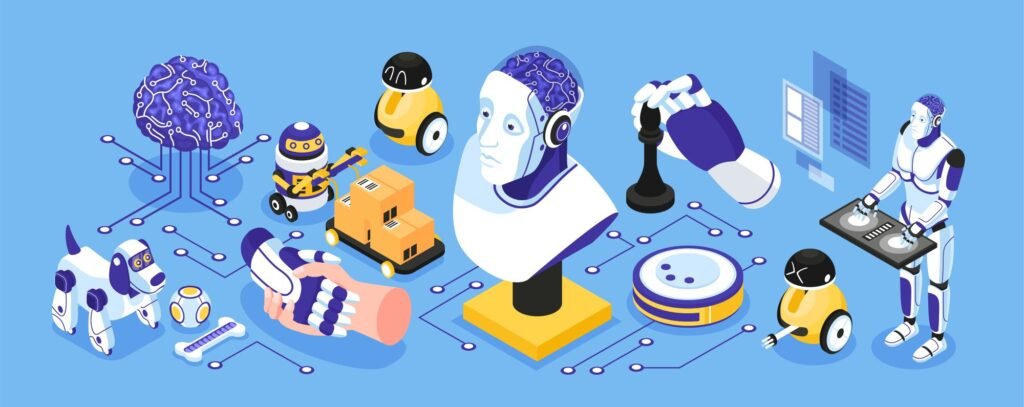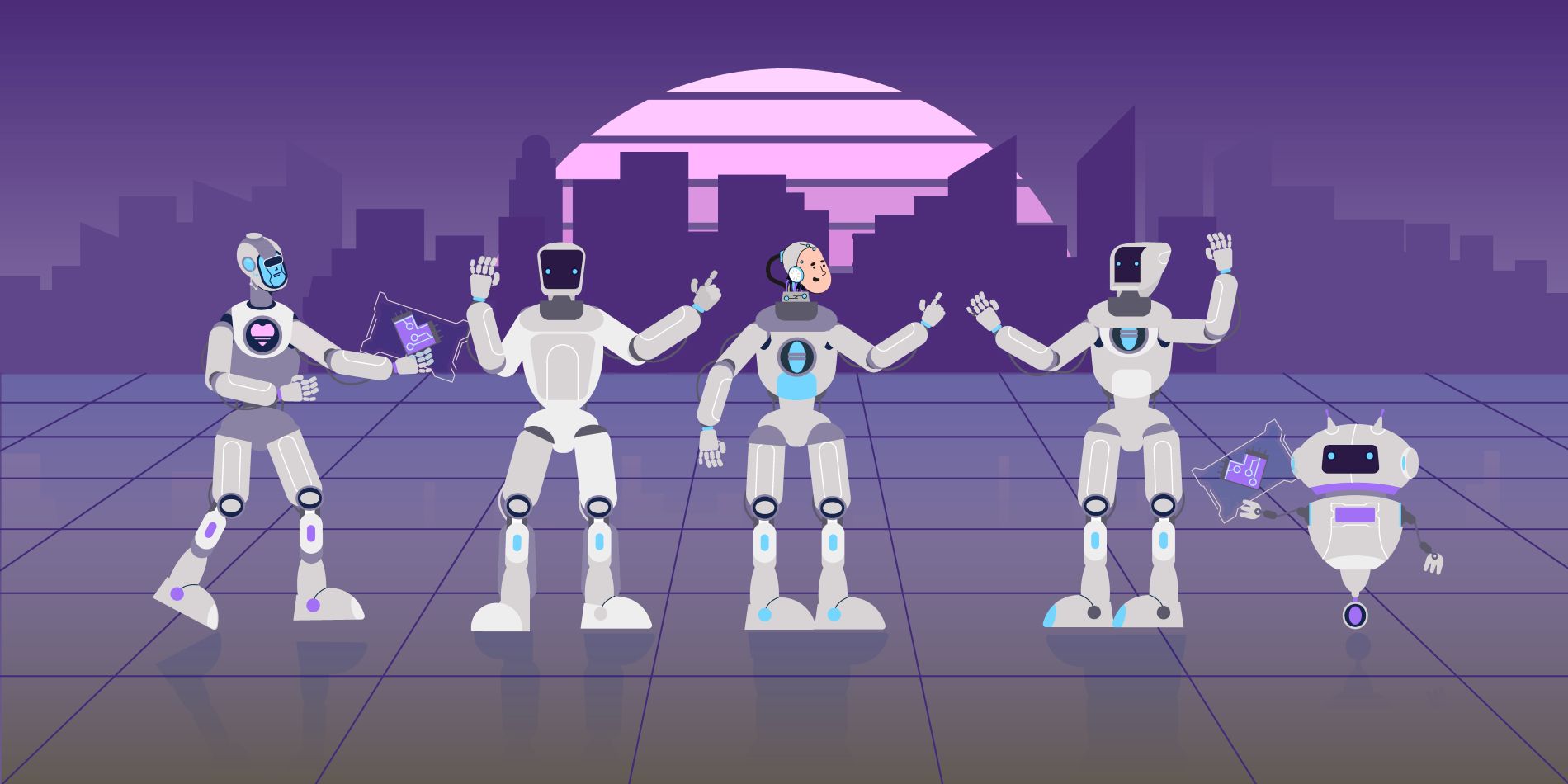Artificial Intelligence (AI) is transforming industries, powering everything from chatbots to advanced code generators. At the heart of this revolution are Large Language Models (LLMs), which are AI systems designed to understand and generate human-like text. However, these models come in vastly different sizes, measured by their parameters—the building blocks that determine their ability to learn and reason.
The size of an AI model has significant implications for its capabilities, cost, and use cases. In this article, we’ll explore the trade-offs between small AI models and large AI models, their strengths and weaknesses, and how to choose the right one for your needs. We’ll break it down into simple terms, using real-world analogies and examples to make it easy to understand.
On This Page
Table of Contents
1. Introduction: Why Does AI Model Size Matter?
Imagine you’re building a house. A small house might be easier and cheaper to construct, but it won’t have as much space or as many features as a mansion. Similarly, in AI, small models are like compact homes—efficient and cost-effective but limited in scope—while large models are like sprawling estates with plenty of room for complex tasks but requiring more resources to build and maintain.
- What are AI models? At their core, AI models are mathematical systems that learn from data. Large Language Models (LLMs) are a type of AI model specifically designed to process and generate human language.
- Why does size matter? Size in AI is measured by parameters, which are the individual weights in a neural network that get adjusted during training. These parameters determine what the model can remember and reason about.
- Small models might have hundreds of millions to a few billion parameters.
- Large models can have hundreds of billions or even approach a trillion parameters.
The debate over small vs. large models isn’t just academic—it has real-world consequences for cost, performance, and practical applications. Let’s dive into what each size category offers.
2. Understanding Model Size: What Are Parameters?
To understand why size matters, we need to grasp what parameters are. Think of parameters as the “knobs” on a machine that you adjust to make it work better. In AI:
- Parameters are floating-point numbers that a neural network tweaks during training.
- They collectively encode everything the model knows—how to recognize patterns, recall facts, and even reason about new information.
Examples of Model Sizes:
| Model Name | Parameter Count | Category | Notes |
|---|---|---|---|
| Mistral 7B | 7 billion | Small | Lightweight, can run on modest hardware, even smartphones for some tasks |
| Qwen 1.5 MOE | <3 billion (active) | Small | Breakthrough in efficiency, capable of generalist tasks |
| Llama 3 (Meta) | 400 billion | Large | Heavyweight, requires significant computational resources |
| DeepSeek-R1 | 671 billion | Large | Known for efficiency in complex reasoning tasks (2025) |
Key Insight: More parameters generally mean more capability—but also higher costs in terms of compute power, energy, and memory.
3. Capabilities of Large Models: Why Go Big?
Larger models have more “room” to store knowledge and perform complex tasks. Here’s why they’re often preferred for certain applications:
- Memorization and Knowledge: With billions or even trillions of parameters, large models can store vast amounts of information. They can recall facts across multiple domains (e.g., history, science, law) and support numerous languages.
- Complex Reasoning: Large models excel at intricate chains of reasoning. For example:
- Broad Spectrum Code Generation: A large model can master dozens of programming languages and handle multi-file projects or unfamiliar APIs.
- Document-Heavy Tasks: Processing large contracts or medical guidelines requires keeping a lot of context in mind—something large models are better at due to their longer context windows (the amount of text they can process at once).
- High-Fidelity Multilingual Translation: Large models can capture nuances and idioms in multiple languages more effectively than smaller ones.
Real-World Example:
Imagine you’re a software developer working on a project that spans multiple programming languages (e.g., Python, Java, C++). A large model like Llama 3 can understand and generate code across these languages, even handling edge cases or unfamiliar libraries. A smaller model might struggle with this complexity.
However, these capabilities come at a cost:
- Training Costs: Large models require exponentially more compute power and energy to train.
- Inference Costs: Running them in production also demands significant memory and processing power.
- Environmental Impact: Training large models can consume as much energy as powering hundreds of homes for days.
4. Advantages of Small Models: Why Less Can Be More?
While large models dominate in raw capability, small models are catching up fast—and in some cases, they’re outright preferable. Here’s why:
- Cost-Effectiveness: Small models require less compute power, energy, and memory to train and run. This makes them more affordable for businesses and individuals.
- Speed: They offer faster inference times (the time it takes to generate a response), which is critical for real-time applications.
- On-Device Deployment: Small models can run entirely on devices like smartphones or tablets, ensuring privacy (no data needs to be sent to the cloud) and enabling offline functionality.
- Specialization: When fine-tuned on specific domains, small models can achieve near-expert accuracy. For example:
- Enterprise Chatbots: A 7 or 13 billion parameter model fine-tuned on company manuals can match the performance of much larger models on typical Q&A tasks.
- Summarization: In a study, Mistral 7B achieved summarization metrics (ROUGE and BERT scores) indistinguishable from GPT-3.5 Turbo but ran 30 times cheaper and faster.
Recent Progress in Small Models (as of 2025):
- Efficiency Gains: Advances in training techniques and data curation have made small models smarter. For instance:
- Microsoft’s Phi models showed that curating high-quality data can boost performance significantly (Phi Models).
- Orca 2 demonstrated how synthetic data can enhance small models’ reasoning abilities.
- Benchmark Performance: By 2025, models like Qwen 1.5 MOE (with fewer than 3 billion parameters) have crossed the 60% threshold on benchmarks like MMLU, a feat that once required models with 65 billion parameters.
Key Insight: Small models are no longer just “lite” versions—they’re becoming powerful tools in their own right.
5. Benchmarks and Progress: How Are Models Measured?
To compare AI models objectively, researchers use benchmarks like MMLU (Massive Multitask Language Understanding):
- What is MMLU? It’s a test with over 15,000 multiple-choice questions across domains like math, history, law, and medicine. It measures both factual recall and problem-solving.
- Scoring:
- Random guessing: ~25%
- Average human: ~35%
- Domain expert: ~90% (in their specialty)
- AI Models:
- GPT-3 (2020, 175 billion parameters): 44% (better than average human but far from mastery)
- Frontier models (2025): High 80s (approaching expert levels)
The striking trend is how quickly smaller models have improved:
| Date | Model Name | Parameter Count | MMLU Score (>60%) |
|---|---|---|---|
| February 2023 | Llama 1-65B | 65 billion | Yes |
| July 2023 | Llama 2-34B | 34 billion | Yes |
| September 2023 | Mistral 7B | 7 billion | Yes |
| March 2024 | Qwen 1.5 MOE | <3 billion | Yes |
By 2025, this trend continues, with small models becoming increasingly capable thanks to better training methods and data efficiency.
6. Use Cases: When to Choose Small vs Large AI Models?
The choice between small and large models depends on your specific needs. Here’s a breakdown:
Large Models (Best for Complex, Knowledge-Intensive Tasks)
- Broad Spectrum Code Generation: Handling multiple programming languages and complex projects.
- Document-Heavy Work: Processing large contracts, medical guidelines, or technical standards.
- High-Fidelity Multilingual Translation: Capturing nuances across languages.
- Research and Development: Where cutting-edge performance is crucial.
Small Models (Best for Efficiency and Specialization)
- On-Device AI: Keyboard prediction, voice commands, offline search.
- Everyday Summarization: Summarizing news articles or documents quickly and cost-effectively.
- Enterprise Chatbots: Fine-tuned for specific domains to provide accurate customer support.
- Real-Time Applications: Tasks requiring sub-100 millisecond latency.
New Trends in 2025:
- Multimodal Models: These handle not just text but also images, audio, and video. Large models might be better for complex multimodal tasks (e.g., generating videos from text), while small models can handle simpler ones (e.g., image captioning).
- AI Agents: Autonomous systems that perform tasks like booking flights or managing schedules. Small models can be used for specific subtasks within an agent (e.g., summarizing emails), while large models might handle overall coordination.
7. Real-World Analogies and Examples
Analogy: Vehicles
- Small Models: Compact cars. They’re fuel-efficient (low cost), easy to park (run on modest hardware), and great for city driving (specific tasks). They might not have all the features of a luxury car but are reliable for everyday use.
- Large Models: SUVs or luxury cars. They have more space (knowledge), power (capability), and features (multilingual support), but they’re expensive to maintain (high compute costs) and consume more fuel (energy).
Coding Example: Text Summarization with a Small Model
Here’s how you might use a small model like Mistral 7B for text summarization:
from transformers import AutoTokenizer, AutoModelForSeq2SeqLM
# Load tokenizer and model (Mistral 7B)
tokenizer = AutoTokenizer.from_pretrained("mistralai/Mistral-7B-Instruct-v0.1")
model = AutoModelForSeq2SeqLM.from_pretrained("mistralai/Mistral-7B-Instruct-v0.1")
# Example text to summarize
text = "Large language models have many parameters and can do complex tasks, but they are expensive. Small models are more efficient and can run on devices."
# Tokenize input
inputs = tokenizer(text, return_tensors="pt", max_length=512, truncation=True)
# Generate summary
summary_ids = model.generate(inputs["input_ids"], max_length=50, min_length=10, length_penalty=2.0, num_beams=4, early_stopping=True)
# Decode summary
summary = tokenizer.decode(summary_ids[0], skip_special_tokens=True)
print(summary)Output: “Small models are efficient and can run on devices.”
This example shows how a small model can handle a practical task like summarization quickly and cost-effectively.
In contrast, a large model like GPT-4 might be used for more complex tasks (e.g., generating entire essays or code), but it would require API calls and incur higher costs.
8. Conclusion: Balancing Size and Purpose
In summary, large AI models offer unparalleled capabilities for complex, knowledge-intensive tasks but come with significant costs and resource demands. Small AI models, on the other hand, provide efficiency, speed, and the ability to run on-device, making them ideal for many practical applications. The choice between them depends on your specific use case—whether you need raw power or cost-effective performance.
As we look to 2025 and beyond, the line between small and large models may continue to blur. Small models are becoming smarter through better training techniques, while large models are finding niche applications where their scale is truly necessary. The future of AI lies in finding the right balance between size and purpose.

FAQs
What are small and large AI models?
Small AI models and large AI models are types of artificial intelligence systems, like language models, that process and generate text, code, or other data. Their size is measured by parameters, which are like the “knowledge bits” the model uses to think and respond.
Small models: Have fewer parameters, like 300 million to 7 billion. Example: Mistral 7B (7 billion parameters).
Large models: Have many more parameters, from 100 billion to over 500 billion. Example: Llama 3 400B (400 billion parameters).
How do small and large AI models differ in performance?
Large models generally perform better because they have more parameters, which means they can:
Remember more facts.
Handle complex tasks, like writing detailed reports or reasoning through tricky problems.
Support many languages with better accuracy.
Small models are less powerful but still impressive for specific tasks. They’re improving fast and can now do things that only large models could do a few years ago, like answering general questions or summarizing text.
What are the main advantages of small AI models?
Small models shine in certain situations because they’re lightweight and efficient. Here’s why you might choose one:
Faster: They process tasks quickly, often in milliseconds, perfect for real-time apps like voice assistants.
Cheaper: They use less computing power, saving money on hardware and energy.
Private: They can run on your phone or computer without sending data to the cloud, keeping your information secure.
Good enough for simple tasks: They handle things like summarizing articles or answering basic questions almost as well as larger models.
When should I use a large AI model?
Large models are best for tasks that need deep understanding or lots of information at once. Some examples include:
Complex code writing: They can handle multiple programming languages and big projects with many files.
Heavy document processing: They can read and summarize huge contracts or medical guidelines without missing details.
Advanced translation: They capture the nuances of languages, like idioms, better than small models.
Are small models catching up to large models?
Yes, small models are getting smarter every month! Thanks to better training techniques, they’re doing tasks that used to require much bigger models. For example:
In 2023, a 65-billion-parameter model was needed to score 60% on a tough test called MMLU (Massive Multitask Language Understanding).
By 2024, Qwen 1.5 MOE, with just 3 billion parameters, hit the same 60% score, showing small models are closing the gap.
What are the downsides of large AI models?
While large models are powerful, they come with challenges:
Expensive: They need massive computers (like racks of GPUs) to train and run, costing millions.
Slow: Processing takes longer, which isn’t great for apps needing instant responses.
Energy-hungry: They use a lot of electricity, which isn’t eco-friendly.
Hard to deploy: You need a big data center or cloud service to run them, not just a laptop.
Can small AI models be used on my phone or laptop?
Absolutely! Small models are designed to run on devices like smartphones, laptops, or even smartwatches. They don’t need powerful servers or internet connections, making them perfect for:
Voice assistants (like Siri or Alexa).
Keyboard predictions (suggesting words as you type).
Offline search or translation apps.
How do I choose between a small or large AI model?
It depends on your needs, budget, and setup. Here’s a quick guide:
Choose a small model if:
You need fast, low-cost results.
You’re doing simple tasks like summarizing or answering FAQs.
You want to run it on a phone or keep data private.
Your budget is limited.
Choose a large model if:
You’re tackling complex tasks like coding big projects or analyzing long documents.
You need high accuracy across many languages or topics.
You have access to powerful computers and a bigger budget.
Are small models secure for private data?
Yes, small models are often more secure for private data because they can run on-device, meaning your data never leaves your phone or computer. This is great for:
Personal apps (like note-taking or health trackers).
Business tools (like internal chatbots with sensitive info).
Large models, on the other hand, usually run in the cloud, so your data might be sent to a server, which could raise privacy concerns.
Do large models always give better answers?
Not always! Large models are great for complex tasks, but small models can match or even beat them in specific cases, especially if the small model is fine-tuned (trained extra for a particular job).
For example:
A fine-tuned small model can answer questions about a company’s products as well as a large model, but it’s cheaper and faster.
In a study, Mistral 7B summarized news articles almost as well as a much larger model, GPT-3.5 Turbo, but at a fraction of the cost.








